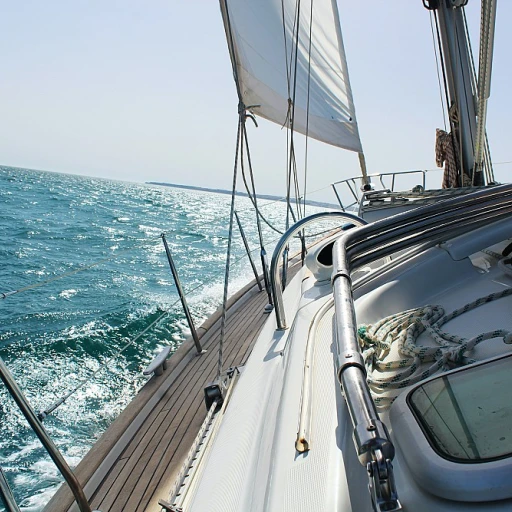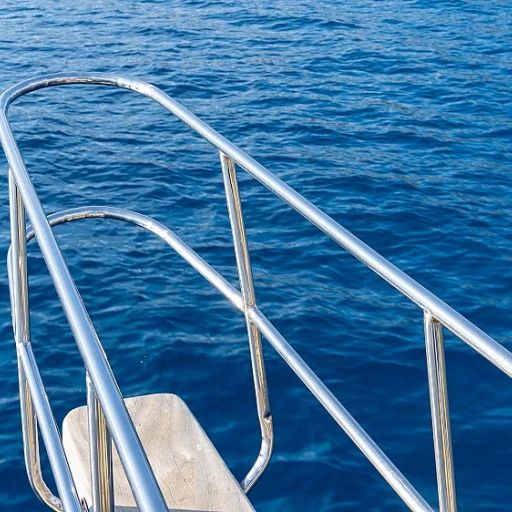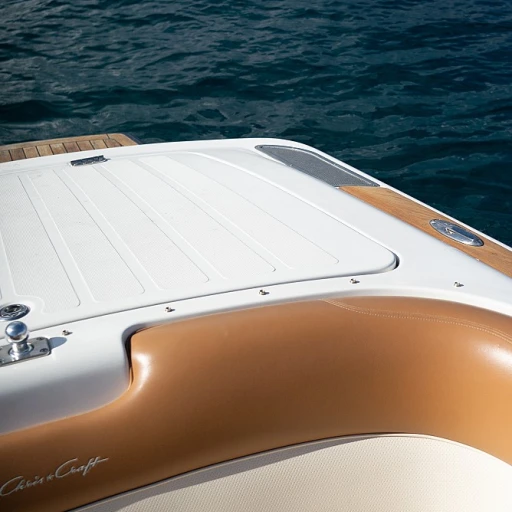
Understanding Hydraulic Steering Systems
Delving into the Mechanics of Hydraulic Steering
For yacht enthusiasts, understanding the intricacies of hydraulic steering systems is crucial. These systems have become a staple in modern marine steering due to their efficiency and reliability. At the core of a hydraulic steering system is the helm pump, which is connected to the steering wheel. When you turn the wheel, the pump pushes hydraulic fluid through nylon hoses to the steering cylinder, which in turn moves the rudder or outboard motor.
Hydraulic steering systems are favored for their smooth operation and power-assisted capabilities, making them ideal for larger boats and yachts. Unlike mechanical systems, which rely on cables and pulleys, hydraulic systems use fluid dynamics to transmit force, offering a more responsive and less physically demanding steering experience.
For those considering an upgrade or installation, a comprehensive steering kit is available, often including all necessary components like the helm, pump, and cylinder. Brands like Lecomble Schmitt are renowned for their high-strength, marine-grade systems that ensure durability and performance in various marine environments.
To enhance your yacht experience with an outboard engine stand, which complements the hydraulic steering system, you can explore more about it here.
Benefits of Hydraulic Steering for Boats
Why Opt for Hydraulic Over Other Boat Steering Solutions?
Opting for hydraulic steering systems can truly transform your boating experience by providing a smooth and effortless navigation process. Unlike traditional mechanical steering, hydraulics offer increased precision and stability, pivotal in maintaining course during variable marine conditions.
With hydraulic systems, your outboard steering is not only reliable but also adjusts seamlessly, even in fast-moving waters. The stroke width of hydraulic cylinders allows for more responsive control over the helm, ensuring that each movement of the steering wheel translates into an exact and predictable maneuver.
A key advantage is the power-assisted nature of these systems. The steering pump provides additional force with minimal effort, reducing fatigue during extended voyages. This ease makes hydraulic steering especially beneficial for larger boats and those fitted with powerful outboard motors.
Another benefit is the reduction in wear and tear. Since hydraulic systems consist of fewer moving parts than mechanical steering, components like the marine steering pump and cylinder encounter less friction, leading to longevity and less frequent maintenance needs. Boaters can appreciate the long-term cost savings from potentially fewer replacements and repairs.
Additionally, hydraulic steering kits are designed with seasonal changes in mind. With systems like the single helm pump, adjustments are minimal, and a quick fill or system bleed can rectify performance issues immediately, preparing you for the next outing.
- Effortless steering – Even in demanding conditions, feel the certainty of control under all circumstances.
- Reliability on longer journeys – Trust that your helm pump and steering cylinder will endure without faltering.
- Saves energy – Enjoy casual boating with less physical exertion, thanks to high-strength marine hydraulic technology.
Thus, choosing a hydraulic steering kit offers not just enhanced handling but a more pleasurable boat steering experience, crucial for those committed to optimal performance and comfort on the sea.
Installation and Maintenance Tips
Successful Setup and Care for Your Hydraulic Steering
When embarking on the installation of your hydraulic steering system, precision and attention to detail are paramount. Selecting the right steering kit is the first step; it should be compatible with your boat's specifications. Consider critical components like the steering cylinder, helm pump, and nylon hose to ensure a seamless fit.
Focus on key elements such as stroke width and ensure the steering cylinder and pump are harmonious with your outboard setup. Brands like Lecomble Schmitt offer high-strength solutions tailored for diverse marine applications.
Proper installation requires meticulous filling of the system. Using a quality hydraulic fluid, carefully purge air out of the system by operating the steering wheel from lock to lock, ensuring the system is fully air-free. The detailed steps will often be outlined in the system SKU manual provided with your kit.
Regular maintenance enhances the longevity and reliability of your hydraulic steering. Routine checks of the steering pump and connections are vital. This prevents complications and potential failures, which could compromise marine safety.
Preventative care also involves periodic inspection of essential parts like the hydraulic cylinder and nylon hose, ensuring all components are free from leaks. Routine maintenance aligns with choosing the right protective measures for your marine assets.
Comparing Hydraulic and Mechanical Steering
Hydraulic vs. Mechanical: Making the Right Choice
When it comes to choosing between hydraulic and mechanical steering systems for your yacht, several factors need to be considered. As we know, hydraulic steering systems utilize a hydraulic pump, cylinder, and hoses to create a smooth and responsive steering experience. This is particularly beneficial for larger boats and those with outboard engines, where power assisted steering makes a significant difference. One of the key advantages of hydraulic systems over mechanical ones is the ease of maneuverability. With hydraulic steering, turning the wheel is effortless, reducing the "lock-to-lock" turns needed, and providing precise control even in demanding marine conditions. This is made possible by components like the helm pump which adjusts the stroke of the steering wheel with high efficiency. In contrast, mechanical steering, which often involves cables and pulleys, might seem simpler and less expensive initially. However, as boat size increases, the effort required to steer mechanically can be significant. This becomes even more evident in challenging weather conditions or when under power, where mechanical systems can feel stiff and unresponsive compared to their hydraulic counterparts. Installation is another aspect where hydraulic systems show their advantages. Although installing a hydraulic steering kit might require more time and expertise, the long-term ease of operation justifies the initial investment. Additionally, hydraulic steering offers flexibility in routing the nylon hose and placing the steering cylinder, which can be crucial in complex yacht layouts. When considering longevity and maintenance, hydraulic systems may require periodic attention, such as checking and refilling the hydraulic fluid and ensuring the system is free of air locks. However, these tasks can be straightforward with regular maintenance and proper use of a maintenance kit that includes items like the Lecomble Schmitt steering pump. Ultimately, the decision largely depends on the type of boating you do, the size of your vessel, and your personal preference for steering feedback. Yacht enthusiasts who prioritize ease of handling and have larger boats are more inclined to favor hydraulic steering systems due to their superior performance and reliability in marine environments.Common Issues and Troubleshooting
Identifying and Resolving Issues
While hydraulic steering systems are renowned for their reliability and smooth operation, issues can still arise, requiring prompt attention to ensure uninterrupted marine adventures. Understanding common problems and knowing how to address them can significantly enhance the longevity and performance of your system.
One recurring issue in hydraulic steering kits is air in the system, which can cause a spongy or underperforming helm. Bleeding the system to remove trapped air is vital, often requiring the use of a hydraulic fill kit to replace the air with hydraulic fluid, ensuring a firm and responsive steering wheel.
Leaks are another concern, frequently occurring at the connection points of the hydraulic hoses and fittings. Inspecting nylon hoses and connections regularly for signs of hydraulic fluid leaks can prevent potential damage. Replacing worn or damaged parts with high-strength components can ensure the system remains leak-free.
Misalignment or malfunction of the steering cylinder or the stroke width can lead to poor directional control and difficulty in achieving a proper lock. A thorough inspection of the hydraulic outboard for any corrosion or wear, particularly on the steering cylinder, is crucial to maintain desired performance levels. Regular maintenance of the steering pump and helm ensures consistent power delivery to the wheel and reduces the risk of unexpected outboard steering failures.
In scenarios where troubleshooting steps do not resolve the issue, consulting with a marine hydraulic expert or referring to the steering system's SKU documentation from manufacturers like Lecomble Schmitt can provide additional insights and solutions.
Future Trends in Yacht Steering Technology
Emerging Innovations in Yacht Steering
The yacht industry is witnessing a wave of innovation, particularly in the realm of steering systems. As technology advances, the integration of smart systems and enhanced hydraulic solutions is becoming more prevalent. These innovations aim to improve the efficiency, safety, and overall experience of yacht steering.
One of the most exciting developments is the incorporation of power-assisted steering systems. These systems reduce the physical effort required to maneuver the yacht, making it easier for operators to control their vessels, especially in challenging conditions. The use of a hydraulic steering pump in these systems ensures smooth and responsive handling, which is crucial for both novice and experienced sailors.
Another trend is the refinement of steering cylinders and helm pumps. Manufacturers are focusing on creating high-strength components that offer durability and reliability. The use of advanced materials and engineering techniques is resulting in steering kits that can withstand the harsh marine environment, providing long-term value to yacht owners.
Moreover, the integration of digital interfaces with traditional hydraulic systems is gaining traction. These interfaces allow for real-time monitoring and adjustments, providing yacht enthusiasts with precise control over their steering systems. The ability to customize the stroke width and lock settings through a digital helm wheel is a game-changer for those seeking a tailored boating experience.
Looking ahead, the industry is also exploring the potential of autonomous steering systems. While still in the early stages, these systems promise to revolutionize the way yachts are navigated, offering a glimpse into a future where manual steering could become a thing of the past.
As the yacht industry continues to evolve, staying informed about these trends is essential for enthusiasts and professionals alike. Embracing these innovations not only enhances the boating experience but also ensures that your vessel remains at the forefront of marine technology.













